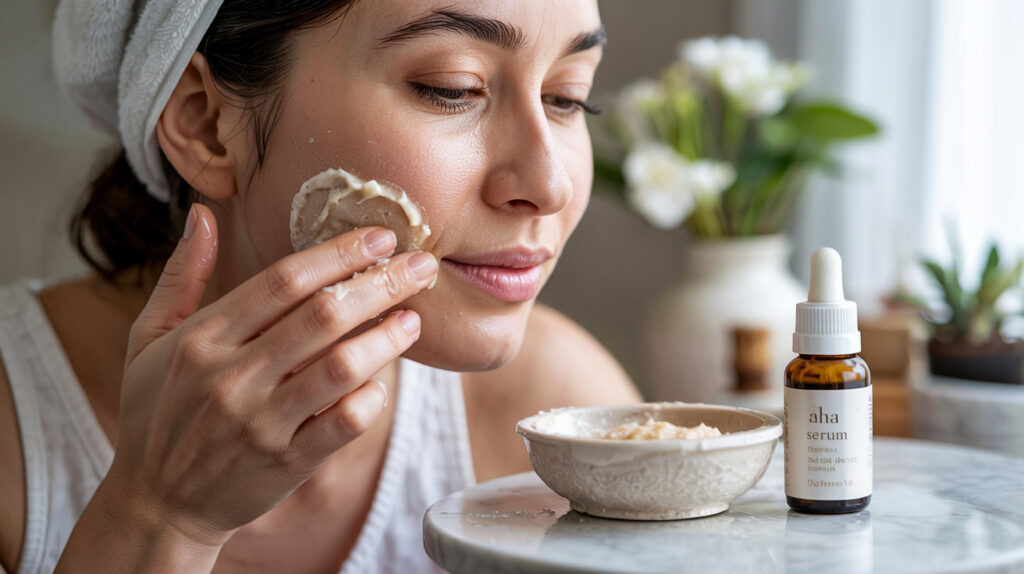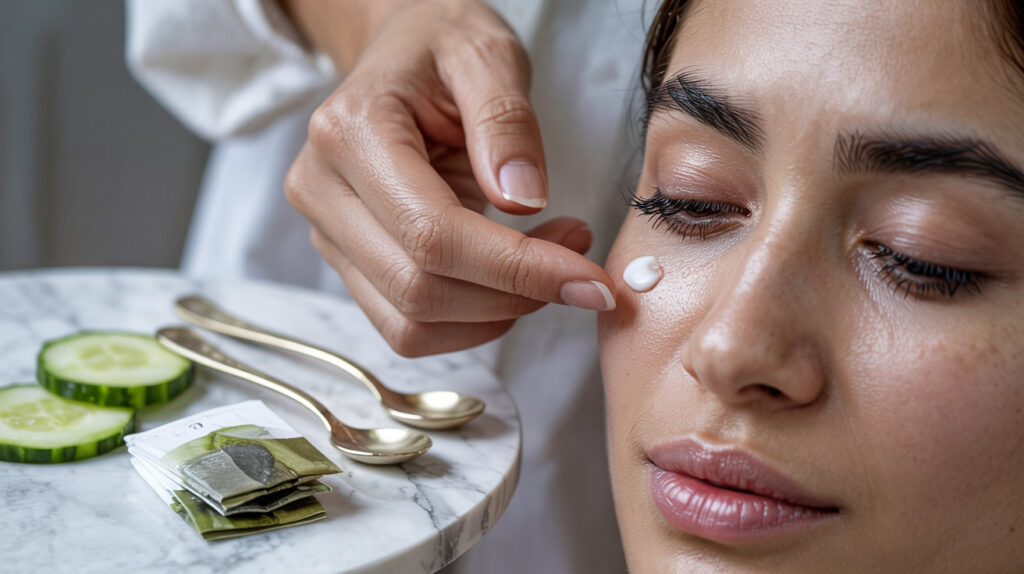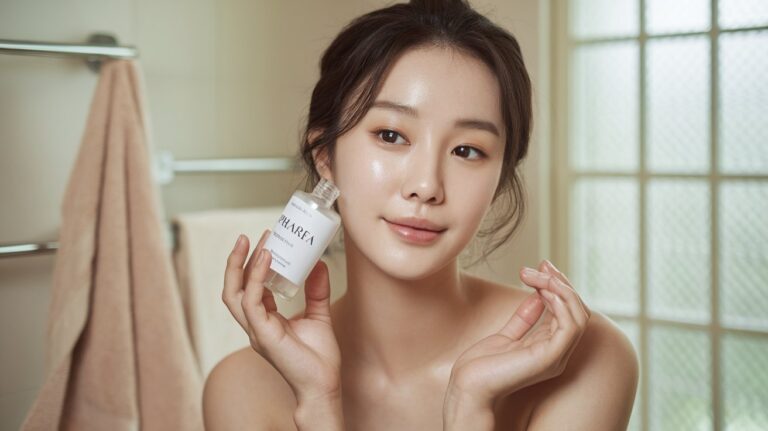Do you remember that morning when you woke up late and had no time for makeup? Yet, someone still complimented your glow? That wasn’t luck—it was your natural radiance shining through. In a world where filters and foundations often mask our true selves, embracing what nature gave us is genuinely refreshing.
I used to spend 40 minutes every morning applying products just to feel presentable. Maybe you can relate? The constant cycle of cover-up, touch-up, and wash-off left my skin tired and my schedule tight. When I finally gave my face a break, something wonderful happened—my skin began to breathe and heal.

Going makeup-free isn’t about giving up on your appearance—it’s about nurturing what you already have. When we skip the cosmetics occasionally, we allow our skin’s natural processes to work unhindered. Pores clear, inflammation calms, and that authentic glow returns.
This guide isn’t about dismissing makeup entirely. Rather, we’re exploring how to enhance what’s naturally yours through proper care, hydration, and simple routines. We’ll share professional approaches that help you feel confident in your own skin, whether you’re running errands or attending special events.
Key Takeaways
- Giving your skin regular breaks from makeup promotes healing and natural radiance
- Proper hydration forms the foundation of naturally glowing skin
- Consistent skincare routines yield better results than occasional treatments
- Natural approaches can save both time and money in your daily routine
- Inner wellness directly reflects in your outer appearance
- Confidence comes from self-care, not cosmetic coverage
The Foundation of Natural Beauty: Understanding Your Skin
Knowing your skin is key to natural beauty. It’s the first step in any good skincare plan. Before choosing products, learn how your skin works and what it needs. This knowledge helps you choose the right path to enhance your natural beauty instead of just covering up.
Your skin is your body’s biggest organ and protects you from harm. It’s also very unique. What works for your friend might not work for you. That’s why finding skincare that’s just right for you is so important.
Identifying Your Skin Type
Finding out your skin type is the first step in good skin care. Most people fall into one of five categories:
- Normal skin – balanced, neither too oily nor too dry, with good circulation and a smooth texture
- Dry skin – tight, flaky, and sometimes itchy, with nearly invisible pores
- Oily skin – shiny, thick, and prone to enlarged pores and breakouts
- Combination skin – oily in the T-zone (forehead, nose, and chin) but dry elsewhere
- Sensitive skin – easily irritated, with potential redness and inflammation
To find your skin type, wash your face with a gentle cleanser and wait an hour. Then, see how your skin looks and feels. Is it tight and dry? You might have dry skin. Is your T-zone oily but your cheeks are fine? You likely have combination skin. Knowing your skin type helps you pick the right products.
Your skin type can change with the seasons, hormones, and age. Regularly checking your skin helps your routine stay on track.
Common Skin Concerns and Their Root Causes
Many of us deal with specific skin issues that affect our confidence. To tackle these problems, we need to know what causes them:
- Acne – usually caused by too much oil, bacteria, inflammation, and clogged pores
- Hyperpigmentation – comes from sun damage, inflammation, or hormonal changes
- Fine lines and wrinkles – caused by aging, sun exposure, and facial expressions
- Rosacea – triggered by environmental factors, spicy foods, alcohol, and stress
- Dullness – caused by dead skin cells, dehydration, and poor circulation
Knowing the causes of these issues lets us take action to improve our skin health. For example, if your acne is due to hormones, you might change your diet or see a dermatologist. This way, you’re not just covering up problems.
Things like pollution, UV rays, and climate also affect your skin. If you live in a city, your skin might need extra cleaning. In dry places, keeping your skin hydrated is even more important.
The Importance of Consistency in Skincare
Consistency is often overlooked in achieving beautiful skin naturally. A good skincare routine only works if you stick to it. Since skin cells renew every 28 days, it takes about a month to see results.
It’s best to refrain from changing skin care products too often. Switching too much can irritate your skin or cause breakouts. Give your skin time to adjust to new treatments – usually 4-6 weeks – before deciding if they work.
To keep your skincare consistent:
- Have a morning and evening routine that fits your skin type and concerns
- Use products as directed, in the correct order and amount
- Clean your face daily to remove dust and pollutants that speed up aging
- Track your skin’s progress with photos to see improvements
- Make only one change at a time when adjusting your routine
When you understand your skin’s needs and care for it consistently, you lay the groundwork for natural beauty. This approach makes your skin glow without needing makeup to look healthy.
Essential Skincare Routine for Radiant Skin
Getting your skin to glow naturally is more than just luck. It takes a good skincare routine. A well-planned routine can turn dull skin into a glowing canvas that doesn’t need much makeup. Let’s look at the three key steps for effective skincare.
Cleansing: The First Step to Beautiful Skin
Cleansing is a must for any skincare routine. It’s like hitting the reset button for your skin. It removes dirt, oil, and pollutants that can clog pores and dull your skin.
In the morning, use a gentle cleanser to refresh your skin without stripping it of natural oils. At night, use a more thorough cleanser to remove makeup and sunscreen. If you wear makeup, try double cleansing. Start with an oil-based cleanser to dissolve makeup, then use a water-based cleanser to purify your skin.The right cleanser is crucial. If your skin feels tight or irritated, your cleanser might be too harsh. Look for pH-balanced formulas that keep your skin’s natural barrier intact while removing impurities.
Exfoliation: Removing Dead Skin Cells
Ever felt like your skin looks tired and dull? It might be because of dead skin cells. Exfoliation is your secret to revealing fresh, vibrant skin underneath.

- Removes dull, dead skin cells that make your complexion appear tired
- Unclogs pores to prevent breakouts
- Improves product absorption
- Stimulates cell turnover for a natural glow on your face
- Smooths skin texture for a more even appearance
Be careful not to overdo it. Exfoliate 1-2 times a week to avoid irritation. Sensitive skin might only need once a week, while oilier skin can handle twice a week.Choose your exfoliant wisely. Chemical exfoliants are gentle but effective, while physical scrubs offer quick results but need careful use to avoid skin damage.
Serums and Treatments for Targeted Concerns
After cleansing and exfoliating, it’s time to tackle specific skin issues with targeted treatments. Serums are concentrated formulas that deliver potent ingredients deep into the skin.
Serums go deeper than moisturizers, making them great problem-solvers. They can tackle hyperpigmentation and fine lines.
When picking serums, focus on your main skin concerns. Too many active ingredients can irritate your skin and reduce results.
| Skin Concern | Key Ingredients to Look For | Benefits | Application Tips |
|---|---|---|---|
| Dullness & Uneven Tone | Vitamin C, Niacinamide, Alpha Arbutin | Brightens, evens skin tone, boosts radiance | Apply in the morning for antioxidant protection |
| Fine Lines & Wrinkles | Retinol, Peptides, Bakuchiol | Stimulates collagen, accelerates cell turnover | Use at night; start with lower concentrations |
| Dehydration | Hyaluronic Acid, Glycerin, B5 | Attracts and binds water to skin | Apply to damp skin for maximum absorption |
| Acne & Congestion | Salicylic Acid, Tea Tree, Zinc | Unclogs pores, reduces inflammation | Can be used as spot treatment or all-over serum |
| Sensitivity & Redness | Centella Asiatica, Aloe, Oat Extract | Calms inflammation, strengthens skin barrier | Avoid combining with exfoliants in the same routine |
Consistency is key with serums. Some ingredients, like vitamin C, can brighten your skin right away. But most need 4-6 weeks of regular use to show results. Don’t keep switching products too often.
Remember, cleansing, exfoliating, and using targeted treatments are the basics for beautiful skin. Master these steps before adding more to your routine. You’ll be on your way to skin that looks so healthy and radiant, you might not even need makeup.
Hydration: The Secret to Glowing Skin
Hydration is key to beautiful skin. It turns dull skin into radiant. Drinking enough water balances moisture and boosts your natural glow.
Internal Hydration: How Much Water You Really Need
Drinking eight glasses of water a day is a good start. But, your needs change based on your activity, climate, and size. Listen to your body to know how much water you need.
Staying hydrated keeps your skinplump and elastic. This reduces fine lines and gives a dewy look. It also helps clear your skin by flushing out toxins.
Experts say drink 2-3 liters (8-12 glasses) of water daily. If water is too plain, add fruits or herbs for a tasty twist.
Good hydration does more than just improve your skin. It boosts energy, digestion, and brain function. All these factors add to your overall glow and health.
Moisturizers for Different Skin Types
Moisturizers help your skin stay hydrated from the outside. Choosing the right one for your skin type is important.
For oily skin, use gel or water-based moisturizers. They hydrate without clogging pores. Look for “non-comedogenic” products to avoid shine and breakouts.
Dry skin needs richer creams. These create a barrier and prevent moisture loss. They also make your skin feel comfortable.
Combination skin needs a mix of products. Use a light moisturizer everywhere and a richer one on dry spots.
If you have sensitive skin, choose fragrance-free, hypoallergenic products. Natural ingredients are often gentler and hydrating.
Hydrating Ingredients to Look For
When buying moisturizers, look for certain ingredients. Hyaluronic acid holds a lot of water, keeping your skin hydrated all day.
Glycerin is similar but feels lighter. It’s good for all skin types, even oily and acne-prone.
Ceramides help your skin’s barrier, keeping moisture in and damage out. They’re great for dry or mature skin.
Squalane mimics your skin’s oils, providing hydration without greasiness. It’s good for most skin types and balances oil.
For extra hydration, use a hydrating mask once a week. These masks revitalize your skin and help your regular moisturizers work better.
Facial mists with rose water, aloe vera, or thermal spring water are great for daily hydration. Keep one in your bag for a quick refresh.
Hydrated skin reflects light well, giving a natural glow. By focusing on hydration, you’re caring for your skin’s health and beauty.
Beauty Tips to Look More Attractive Through Nutrition and Lifestyle
Getting beautiful skin without makeup starts with what you eat and your daily habits. Eating right and taking care of yourself can make your skin glow. Let’s see how nutrition and lifestyle can change your skin and make you look pretty naturally.
Beauty-Boosting Foods for Skin Health
“You are what you eat” is true for skin health. Eating foods rich in certain nutrients can greatly improve your skin. This makes you look healthy without makeup.
Antioxidant-rich foods like berries, dark leafy greens, and nuts fight aging. They protect your skin cells from damage and keep your skin looking young.
Omega-3 fatty acids in salmon, flaxseeds, and walnuts reduce inflammation. Eating these foods twice a week keeps your skin from getting dry.
Vitamin C is key for healthy skin. It helps make collagen, which keeps skin firm. Foods like citrus fruits, bell peppers, and strawberries are great sources.
| Nutrient | Food Sources | Skin Benefits | Recommended Intake |
|---|---|---|---|
| Antioxidants | Berries, dark chocolate, green tea | Fights free radicals, prevents premature aging | Daily consumption |
| Omega-3 Fatty Acids | Salmon, flaxseeds, walnuts | Reduces inflammation, maintains elasticity | 2-3 servings weekly |
| Vitamin C | Citrus fruits, strawberries, kiwi | Boosts collagen production, brightens skin | 75-90mg daily |
| Zinc | Oysters, pumpkin seeds, lentils | Regulates oil production, promotes healing | 8-11mg daily |
The Impact of Beauty Sleep on Skin Regeneration
Beauty sleep is real. Deep sleep repairs and regenerates your skin. Without enough sleep, your skin looks dull and has more imperfections.
Try to sleep 7-8 hours each night. This reduces dark circles and inflammation. It also helps your skin cells renew.
Make your bedroom sleep-friendly. Keep it cool, dark, and free from distractions. A silk pillowcase can also reduce wrinkles and prevent sleep lines.
Regular Exercise for Enhanced Circulation and Natural Glow
Exercise does more than keep you fit. It’s great for beautiful skin. Exercise boosts blood flow to your skin cells.
This flow brings oxygen and nutrients while removing toxins. This is why you often look great after working out. Even 30 minutes of activity a few times a week can improve your skin.
Sweating during exercise cleans your pores. It’s like a natural detox for your skin. Just remember to wash your face after exercising to avoid clogged pores.
Yoga combines exercise benefits with stress relief. It stretches and calms your mind, improving your skin and mood.
Stress Management for Clearer Skin
Stress can harm your skin. It increases cortisol, leading to breakouts and worsening skin conditions.
Managing stress is key for clear skin. Try meditation, deep breathing, and mindfulness. These can lower stress hormones and improve your skin.
Set boundaries in your life to avoid chronic stress. Saying no and enjoying activities you love are simple ways to manage stress.
Being in nature also reduces stress. A 20-minute walk in a park can calm your mind and improve your skin.
By focusing on nutrition, sleep, exercise, and stress management, you’ll naturally glow. Healthy from the inside means beautiful on the outside. These changes will also improve your overall health.
Targeting Specific Skin Issues Naturally
Using natural remedies can change your skin without makeup. A good skincare routine is the base for healthy skin. But, for specific issues, you need a more focused approach. Let’s see how to tackle common skin problems with natural solutions that make you look beautiful without hiding your natural look.
Reducing Dark Circles and Puffiness
Dark circles and puffiness can make you look tired, even if you’re well-rested. The skin around your eyes needs special care to stay young.
Eye creams with caffeine, vitamin K, or peptides are great for this area. Use your ring finger to apply eye cream every night. This gentle tapping helps circulation without pulling the skin.
For a quick fix to instantly make your eyes look fresh, try these:
- Chilled cucumber slices on closed eyes for 10 minutes
- Cold tea bags (green or black) for 5-10 minutes
- Cold spoon therapy – chill two spoons and gently press on puffy areas

Evening Out Skin Tone and Texture
Uneven skin tone and rough texture often lead to makeup use. Instead of covering, tackle these issues to show your natural glow.
Use ingredients that fight hyperpigmentation and boost cell turnover for a even skin tone naturally:
- Vitamin C serums to brighten and fade dark spots
- Niacinamide (vitamin B3) for less redness and discoloration
- Alpha arbutin to stop melanin production
- Gentle AHA/BHA exfoliants for removing dead skin cells
Exfoliation is key for better texture, but don’t overdo it. Stick to 1-3 times weekly, based on your skin tone and sensitivity. Regular exfoliation reveals fresher, more even skin that makes you beautiful naturally.
Managing Oily Skin and Breakouts
Excess oil and breakouts can be tough, but harsh products can make things worse. The goal is to balance oil control with needed hydration.
For oily skin, look for these ingredients in your products:
- Salicylic acid to clear pores and reduce inflammation
- Tea tree oil as a natural antibacterial agent
- Niacinamide to regulate sebum production
- Zinc to calm irritation and reduce oil production
Clay masks once a week help remove impurities without drying out. Choose kaolin or bentonite clay that complement your skin type. Even oily skin needs moisture – use lightweight, oil-free moisturizers with hyaluronic acid to keep your skin looking balanced and healthy.
Combating Dryness and Flakiness
Dry, flaky skin often leads to heavy makeup use. A moisture-rich routine will let your natural glow shine without makeup.
To fight dryness, we have loads of tips that work with your skin’s natural processes:
- Layer hydrating products from thinnest to thickest consistency
- Use humectants like hyaluronic acid and glycerin to draw moisture into the skin
- Seal in hydration with emollients like shea butter, squalane, or facial oils
- Apply a thicker moisturizer at night when skin repair is most active
Using a humidifier in dry places helps prevent moisture loss from your skin. Try a hydrating sleep mask twice weekly to wake up with plump, glowing skin that makes you look pretty without makeup.
By tackling specific skin issues with natural methods, you’ll have a complexion that needs less makeup and shows more of your true beauty. Remember, consistency is key. These solutions take time and patience, but the reward of naturally beautiful skin is worth it.
Sun Protection and Environmental Defense
Protecting your skin from the sun and environmental damage is key to keeping it beautiful. Many focus on quick fixes, but prevention is the real secret to glowing skin. Let’s see how shielding your skin from harm can naturally enhance your beauty.
Daily Sunscreen: The Non-Negotiable Step
Sunscreen is essential every day, not just for beach trips. UV rays can harm your skin even on cloudy days. This damage can cause early aging, dark spots, and loss of skin elasticity.
Using broad-spectrum SPF 30+ sunscreen daily is the best way to fight aging. The beauty world now offers sunscreens that are lightweight and won’t mess up your makeup.
When outside, reapply sunscreen every two hours to keep your skin safe. There are now powder sunscreens and clear sticks that make this easy.

Antioxidants for Environmental Protection
Sunscreen alone can’t protect your skin fully. Pollutants, blue light, and other stressors harm skin cells. Antioxidants are the answer.
Antioxidants neutralize free radicals, protecting your skin. Adding antioxidant-rich products to your morning routine boosts your beauty all day.
The best antioxidants for skin protection include:
- Vitamin C: Brightens skin while fighting free radicals
- Vitamin E: Strengthens the skin barrier and works well with vitamin C
- Ferulic Acid: Boosts the effectiveness of other antioxidants
- Niacinamide: Reduces inflammation and supports the skin barrier
- Green Tea Extract: Calms skin and provides strong protection
Apply these ingredients under your sunscreen for full environmental protection. This combo keeps your skin healthy and radiant, without needing makeup.
Repairing and Preventing Sun Damage
Don’t worry if you have sun damage. While prevention is easier, some ingredients can repair past damage with consistent use.
Retinoids are top for fixing sun damage. They speed up cell turnover and boost collagen. Start with a gentle version and increase as your skin gets used to it. Use it at night, as it can make your skin more sensitive to sunlight.
Vitamin C serums protect and fade dark spots, improving skin tone. Alpha hydroxy acids (AHAs) gently exfoliate, revealing fresh skin and helping other ingredients work better.
Repairing sun damage takes time and regular use. You’ll see results in 8-12 weeks. Keep up with sun protection to prevent new damage.
Seasonal Skincare Adjustments
Your skin’s needs change with the seasons. Adjusting your routine keeps your skin balanced all year. These changes help your skin adapt to environmental changes.
| Season | Skin Challenges | Protection Strategy | Product Adjustments |
|---|---|---|---|
| Summer | Increased UV exposure, humidity, sweat | Higher SPF, more frequent reapplication | Lighter moisturizers, oil-free formulas |
| Fall | Decreasing humidity, temperature fluctuations | Continued sun protection, adding antioxidants | Slightly richer moisturizers, hydrating serums |
| Winter | Harsh cold, indoor heating, low humidity | Sun protection (especially for snow reflection) | Richer moisturizers, facial oils, gentle exfoliation |
| Spring | Increasing UV, allergens, humidity changes | Renewed focus on sun protection | Transitioning to lighter formulas, increased exfoliation |
Seasonal adjustments are crucial for your skin’s health. Even in winter, UV rays can still damage your skin, especially at high altitudes or when reflected off snow.
By protecting your skin from the environment, you preserve its natural beauty. This approach doesn’t just improve your skin today. It keeps it healthy and radiant for years, reducing the need for makeup.
Conclusion: Embracing Your Natural Beauty Journey
The journey to a natural glow takes time. It’s a path filled with patience, consistency, and self-love. By knowing your skin type and following a skincare routine, you’re on your way to natural beauty.
We’ve given you many tips to boost your beauty without makeup. Proper cleansing and hydration are key for healthy skin. Remember, true beauty comes from caring for yourself inside and out.
As you follow these tips, your face will start to change. Drinking water, sleeping well, and using sunscreen daily can make a big difference. These habits help your skin heal and make you more attractive to others.
Begin your journey by focusing on one or two tips. As your natural glow grows, you’ll feel more confident in your bare skin. Your radiant look will show the care you’ve given yourself, making it the most beautiful statement.





[…] guide has skin care tips that fit any trip and skin type. You’ll learn how to keep your skin looking great, from […]